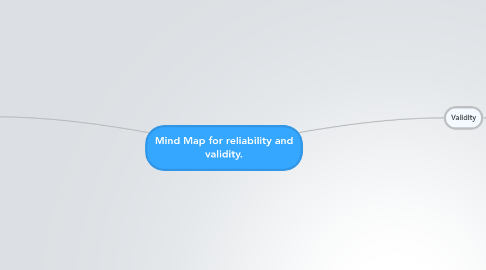
1. Validity
1.1. Content Validity
1.1.1. Content validity evidence is assessed by systematically comparing a test item with instructional objectives to see if they match (Kubiszyn & Borich, 2009).
1.2. Criterion-related Validity
1.2.1. Concurrent validity evidence is determined by correlating test scores with a criterion measure collected at the same time (Kubiszyn & Borich, 2009).
1.2.2. Predictive validity evidence is determined by correlating test scores with a criterion measure collected after a period of time has passed (Kubiszyn & Borich, 2009).
1.3. Construct validity evidence is determined by finding whether test results correspond with scores on other varibles as predicted by some rationale or theory (Kibiszyn & Borich, (2009).
1.4. Interpeting validity evidence
1.4.1. The adequacy of validity evidence depends on both the strength of the validy coefficient and the purpose the test is being used for.
1.4.2. group variablity affects the strength of the validity coefficient.
1.4.3. Validity coefficients should be considered in terms of relevance and reliability or the criterion standard (Kubiszyn & Borich, 2009).
2. Reliability
2.1. test-retest estimates of reliability are obtained by administering the same test twice to the same group of individuals, with a small time interval between testing (Kubiszyn & Borich, 2009).
2.2. Alternate-form estimates of reliability are obtained by administering two alternate of equivalent forms of a test to the same group and correlating their scores.
2.3. Internal consistency.
2.3.1. Split-half
2.3.2. Odd-even
